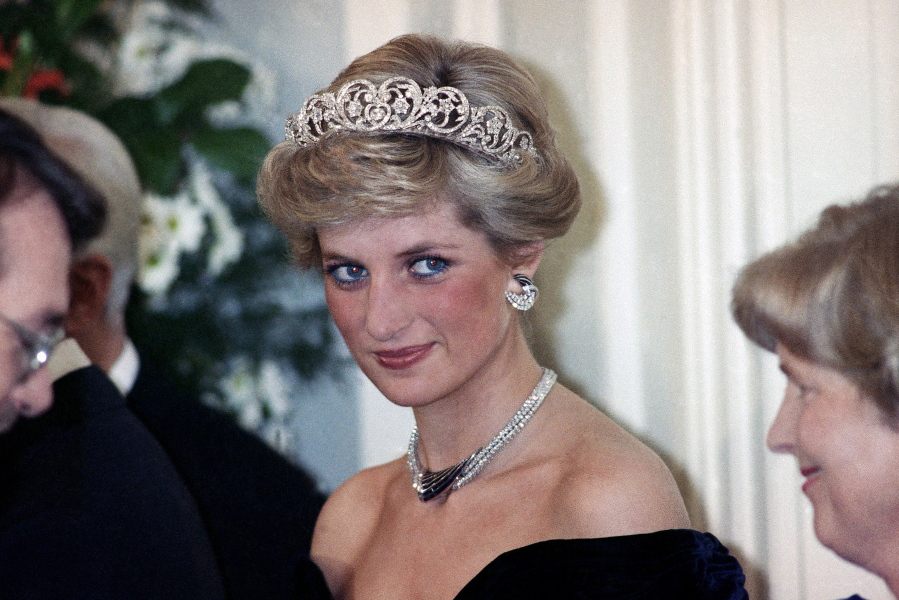LONDON — Above all, there was shock. That’s the word people use over and over again when they remember Princess Diana’s death in a Paris car crash 25 years ago this week.
The woman the world watched grow from a shy teenage nursery school teacher into a glamorous celebrity who comforted AIDS patients and campaigned for land mine removal couldn’t be dead at the age of 36, could she?
“I think we need to remind ourselves that she was probably the best known woman in the English-speaking world, aside from perhaps Queen Elizabeth II herself,’’ said historian Ed Owens.
“And, given this massive celebrity persona that she had developed, to have that extinguished overnight, for her to die in such tragic circumstances, at such a young age, I think really came as a massive shock to many people.”
It was that disbelief that cemented Diana’s legacy as the woman who brought lasting change to Britain’s royal family, helping bridge the gap between centuries of tradition and a new, multicultural nation in the internet age.
First, there was the outpouring of grief from the public who streamed to the princess’ home at Kensington Palace to mourn the loss of a woman most had never met. That alone forced the royals to recognize that Diana’s common touch had connected with people in ways that hadn’t yet occurred to the House of Windsor.
Those lessons have since inspired other royals, including Diana’s sons, Princes William and Harry, to be more informal and approachable. For proof, look no further than the glitzy concert that was a centerpiece of June’s Platinum Jubilee celebrating the queen’s 70 years on the throne.
There were rock bands and opera singers, dancers and lasers painting pictures of corgis on the sky. But the biggest applause was for Elizabeth herself, who appeared in a short film to share a pot of tea with British national treasure Paddington Bear. She then solved a longtime mystery and revealed what’s inside her famous black handbag: A marmalade sandwich — just for emergencies.
It wasn’t obvious Diana would be a royal rebel when she married Prince Charles.
A member of the aristocratic Spencer family, Diana was known for flouncy bows, sensible skirts and a boyish blond bob when she started dating the future king. After leaving school at 16, she spent time at a finishing school in the Swiss Alps and worked as a nanny and preschool teacher while living in London.
But she blossomed, becoming an international style icon the moment she walked down the aisle of St. Paul’s Cathedral shrouded in lace and followed by a 25-foot train on July 29, 1981.
From that moment on, reporters and photographers followed Diana wherever she went. While Diana hated the intrusion, she quickly learned the media was also a tool she could use to bring attention to a cause and to change public perceptions.
That impact was seen most famously when the princess opened the U.K.’s first specialized ward for AIDS patients on April 9, 1987.
Such ribbon-cutting ceremonies are a staple of royal duties. But Diana realized there was more at stake. She reached out and took the hands of a young patient, demonstrating the virus couldn’t be transmitted by touch. The moment, captured by photos beamed worldwide, helped combat the fear, misinformation and stigma surrounding the AIDS epidemic.
A decade later, Diana was even more media savvy.
Seven months before she died, Diana donned a protective visor and flak jacket and walked down a path cleared through a minefield in Angola to promote the work of The HALO Trust, a group devoted to removing mines from former war zones. When she realized some photographers didn’t get the shot, she turned around and did it again.
The images brought international attention to the campaign to rid the world of explosives that lurk underground long after wars end. Today, a treaty banning land mines has been signed by 164 countries.
But that public platform came at a price.
Her marriage disintegrated, with Diana blaming Charles’ liaison with Camilla Parker Bowles. The princess also struggled with bulimia and acknowledged suicide attempts, according to “Diana: Her True Story — In Her Own Words,’’ published in 1992 based on tapes Diana sent to author Andrew Morton.




